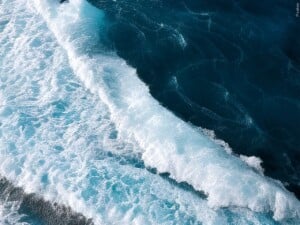California city that experienced deadly tsunami in 1964 warns people to stay off beaches

CRESCENT CITY, Calif. (AP) — According to Associated Press, officials warned people to stay away from beaches and waterways Wednesday in a small California coastal city near the border with Oregon that has been hit by dozens of tsunamis, including one that turned deadly more than 60 years ago.
No injuries were reported Wednesday in Crescent City, a town of 6,600 people, but a dock at the city’s harbor was damaged, officials said. A surge of water lifted the dock off its pilings around 2:40 a.m., and it was eventually submerged, Harbormaster Mike Rademaker said at the briefing. The dock was engineered as a wave and current attenuator to disrupt the waves’ force before they reach the inner harbor, so it appears to have functioned as intended, he said.
It was a long night with a lot of uncertainty, but the city didn’t see flooding, City Manager Eric Wier said. The downtown is high enough that it was open Wednesday morning, he said.
The 1964 event, considered the worst tsunami disaster recorded in the United States, began with a 9.2 magnitude earthquake in Alaska, according to the Crescent City website. Three small waves caused little damage, but then a big wave — nearly 21 feet—devastated 29 city blocks. The quake caused 15 deaths, and the ensuing tsunami caused 124 deaths: 106 in Alaska, 13 in California, and 5 in Oregon, according to the National Oceanic and Atmospheric Administration’s National Centers for Environmental Information.
The city’s downtown was mostly rebuilt, and today a walking tour highlights high-water marks posted on surviving buildings, objects pushed by waves, and memorials to those who died.
The city’s website warns that a tsunami could happen anytime and since most of downtown is in the tsunami run-up zone, if there were a near-shore earthquake, people would only have minutes to reach safety. Thirty-two tsunamis have been observed in the city since 1933, including five that caused damage.
The greatest impact from the tsunami event along the coast Wednesday morning was around Crescent City with strong tidal swings, including up to 4-foot waves, according to James White, a meteorologist at the National Weather Service’s Eureka office.
The city is one of the areas along the West Coast most vulnerable to tsunamis, he said. The shape of the coastline and seafloor influences how tsunamis manifest, and a lot of the wave energy gets funneled into Crescent City, increasing the impact, White said.
Crescent City’s Weir and other officials stressed that conditions may be improving, but it wasn’t yet safe to head to the beach on Wednesday. There were still dramatic tide fluctuations that must carry high currents, Wier said.
“It seems like whenever we have these events, it’s also time that we lose someone just because they’re in the wrong place and they get caught off-guard, and then they’re swept out,” he said.




